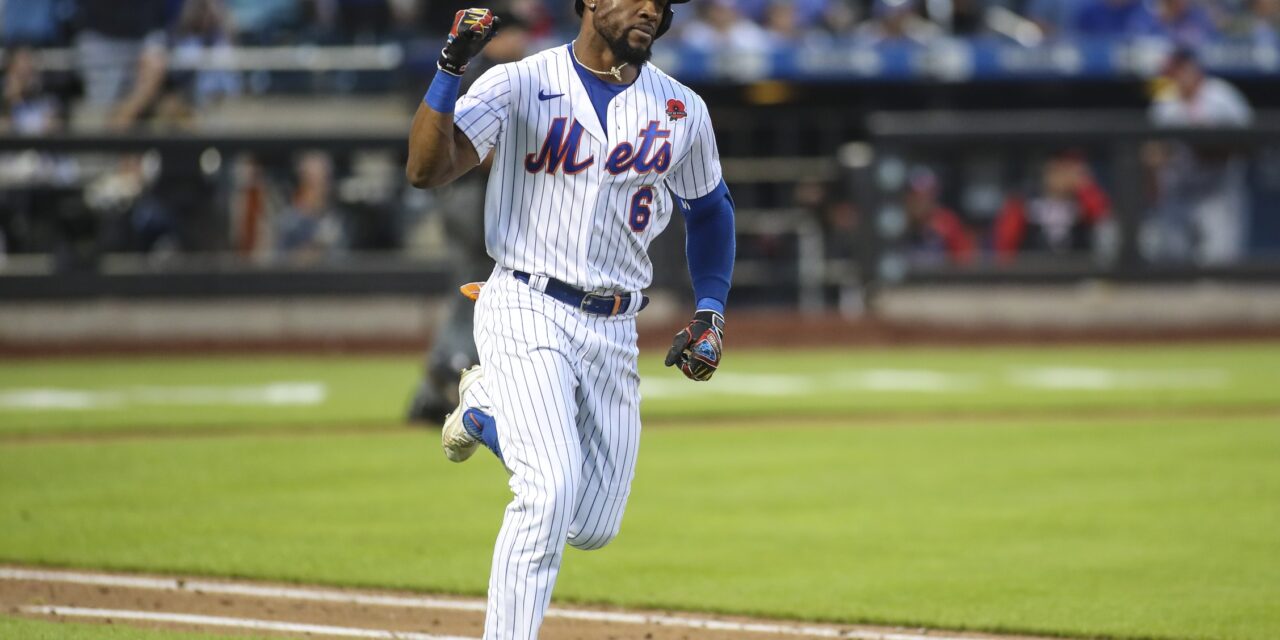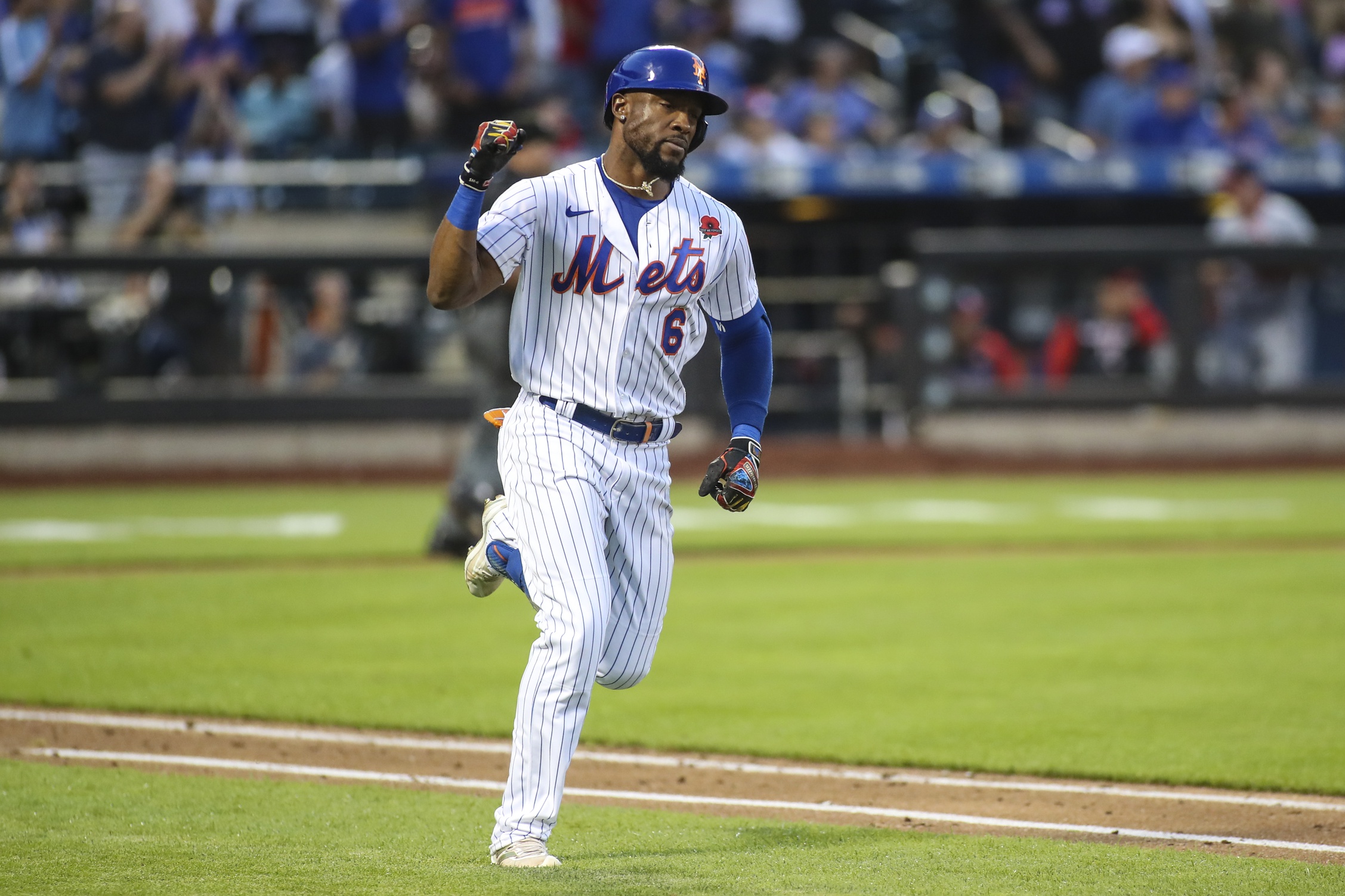
Starling Marte. Wendell Cruz-USA TODAY Sports
There are several members of the New York Mets that are currently underperforming in relation to their respective preseason expectations. A number of those said individuals are deservedly getting the poor results. However, there are a few who, based on their underlying metrics, are experiencing some bad luck or undeserved outcomes. Which Mets are falling victim to this phenomenon?
Starling Marte
The 34-year-old outfielder enters Sunday slashing a woeful .224/.313/.306. This is good for a .618 OPS. Starling Marte also only has one home run and four doubles. These five extra-base hits are an extremely low figure for an individual who has built his career thriving in that category. It has arguably been the slowest start in the 12-year veteran’s career.
Marte owns an xBA (expected batting average) of .262, 38 points better than his actual figure. Meanwhile, his xSLG (expected slugging percentage) is a staggering 99 points better than his actual .306 figure. Both are extreme indicators that Marte is experiencing a plethora of bad luck at the plate.
Despite the hitting struggles, Marte is still doing a good job drawing walks (56th percentile) and not striking out (80th percentile). Additionally, he is stealing bases at a rapid rate – eight in 24 games, which is on pace to shatter his 18 in 118 games last year. So, it has not all been bad.
With positive regression in the offing for Marte at the plate, based off the higher expected than actual statistics, and the fact he is excelling elsewhere, one can expect him to be back to his strong ways soon. This would do wonders for a Mets’ offense that has struggled to score as of late.
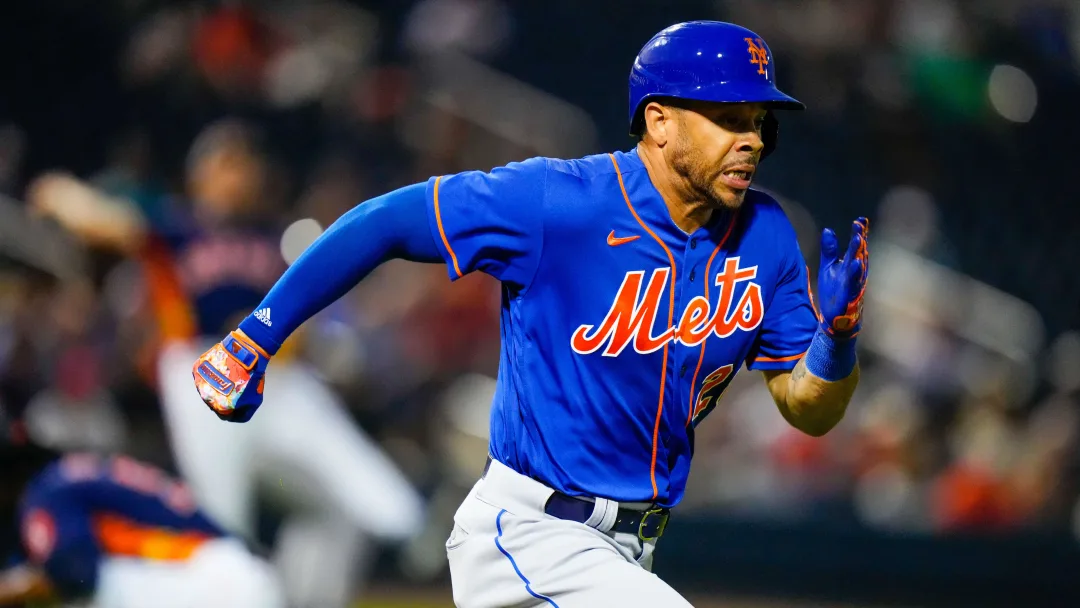
Tommy Pham. Photo via Rich Storry-USA TODAY Sports
Tommy Pham
Tommy Pham isn’t seeing a lot of play time, as he is serving as an almost-exclusive bat against left-handed pitching. However, in his 46 at-bats, it has not gone well. The 10-year major league veteran is batting a meager .196 and his current OBP of .283 is 70 points off his career average. Pham is suppose to be the Mets’ weapon against left-handed pitching, but has yet to be that consistently.
Throughout his career, Pham has thrived at hitting the ball extremely hard and drawing walk by his innate ability of not chasing pitches. Coincidentally enough, he is still doing both of those things this year. However, he is not getting the results yet.
Pham’s hard hit rate is 45.7 percent, which is comfortably above the league’s 38.7 percent average. Meanwhile, his walk rate, which is once again largely influenced by his lack of chasing, is also three percentage points higher than the league average. However, much like Marte, Pham is getting unlucky results.
Specifically, this is evident by his xBA of .273, xSLG of .469, and xwOBA of .345. All much, much higher than the results he is experiencing. Pham coming around, and getting his deserved results, would go a long way in helping the Mets finally conquer left-handed pitching. Again, if he keep striking the ball hard and being selective at the plate, his luck should turn.
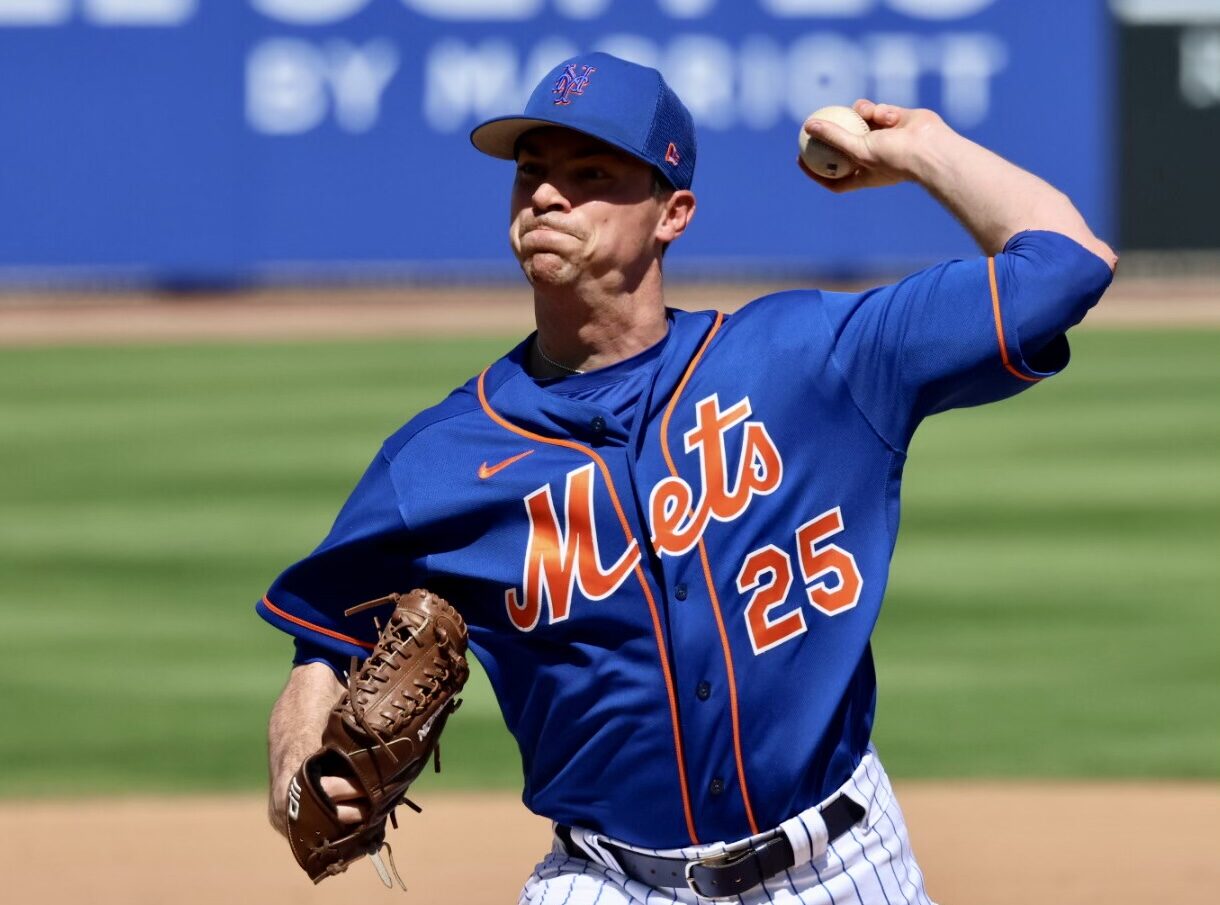
Brooks Raley. Photo by Ed Delany of Metsmerized
Brooks Raley
Brooks Raley has had a very interesting Mets’ tenure so far. Through 14 outings, 12 have been scoreless, but in the two non-scoreless outings he allowed a total of six runs. The more alarming aspect of these outings is the 11 hits he has allowed over the 11 1/3 innings. Raley has also allowed three home runs, a bugaboo that has seemingly effected most Mets’ pitchers.
A deeper dive into his underlying metrics shows that 11 hits may be a tad deceiving. Raley currently owns an xBA of .242 but the actual batting average against is .250. Not a huge difference, but it’s something.
In regard to the home runs, his xSLG is .434 (still above league average, but his actual slugging percentage allowed is much higher at .523. One would expect, when he returns from injury, both the number of home runs and hits he has allowed should regress.
Outside those occurrences, the left-handed reliever has done a good job limiting hard contact overall. He sits in the league’s 93rd percentile in hard hit rate allowed and 83rd percentile in average exit velocity. He is also doing a good job at not walking batters, as his 98th percentile walk rate indicates. There is a decent bit of good going on with Raley’s game as well.
Overall, his ERA of 4.16 is still high, but better than his actual 4.76 mark. Raley’s career history shows hes likely to iron out the kinks and become more the pitcher the Mets brought him in to be. Despite this, as the numbers paint, he is experiencing some bad luck to make matters even a little worse.
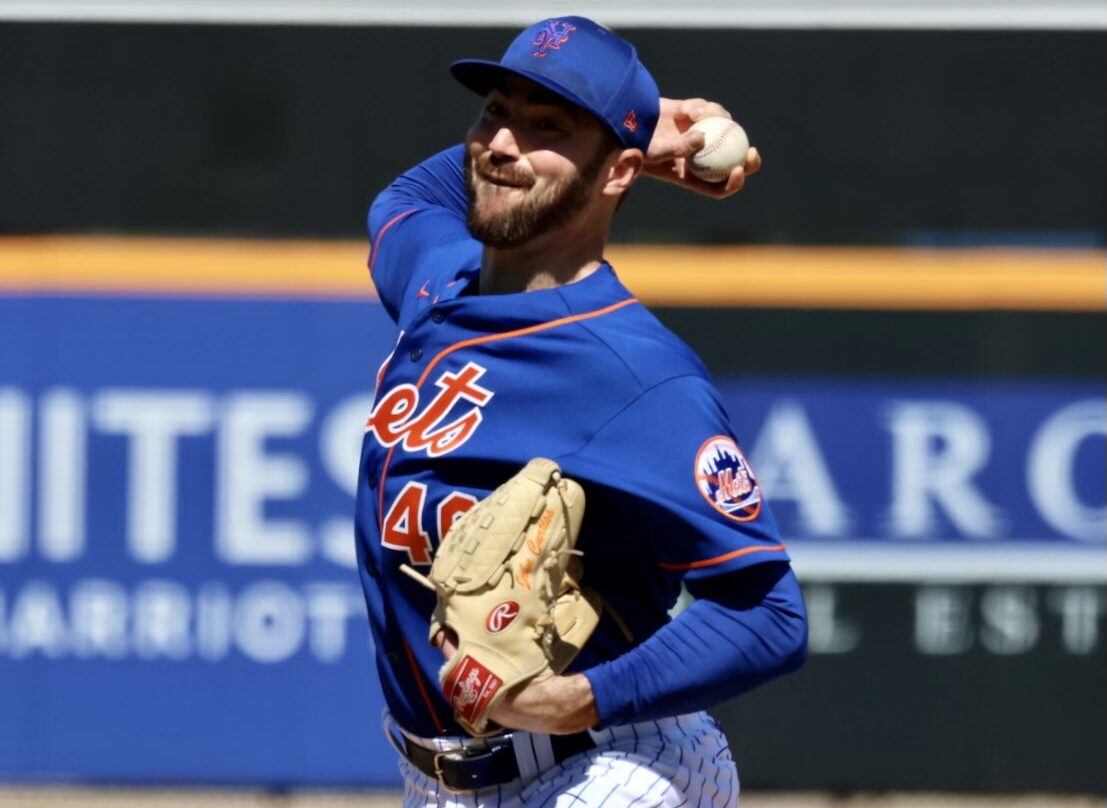
John Curtiss. Photo by Ed Delany of Metsmerized
John Curtiss
The last individual on this list just got called back up from Triple-A (he did not make an appearance while with the team). Before being sent down, John Curtiss threw 10 1/3 innings for New York, allowing eight hits and five runs (4.35 ERA). He has also posted a below average FIP of 4.70.
However, like the three other men on this list, Curtiss has experienced some bad luck. The right-handed pitcher’s xERA of 3.11 is a huge difference from his actual 4.35 mark. This expected figure is a result of doing a terrific job of limiting hard contact (above the 50th percentile in both average exit velocity and hard hit rate against). This has also resulted in an xBA and xSLG which rank in the league’s 84th and 69th percentiles, respectively. Bottom line is his underlying metrics have been strong.
Despite the bad luck, which should turn if Curtiss continues to limit the hard contact, his walk rate is alarming – 24th percentile in the majors. Additionally, he is struggling in inducing swings and misses as well as chases. He must continue to induce that soft contact to be effective. If he keeps doing so, he will emerge as a very effective arm for the Mets going forward especially with some positive regression surely coming his way.
Final Thoughts
As always, expected numbers are always just that. They ultimately do not matter as the product on the actual field determines the wins and losses. However, the expected numbers are a good predictor of future results. And, if the four above individuals keep at their current pace, expect each of them to perform much better. Something that should help the Mets get out of the little run the ball club finds themseleves currently in.
All statistics via Baseball Savant, Baseball Reference, or Fangraphs.


